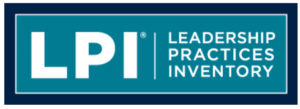Executive Leadership Coaching
Why Our Executive Leadership Process Works . . .
- optional pay-for-performance contract. If we can’t get change – then you don’t pay.
- create a customized program to fit each client’s particular needs.
- use a unique coaching process that changes behaviors.
- blend training with coaching, follow-up, and reinforcement.
- establish a strategic partnership with each of our leaders and clients. Other coaching providers broker relationships between individual leaders and coaches.
For more detailed information and pricing, visit our coaching websites – http://www.toplevelcoaching.com or http://executivecoaching.cc
OUR APPROACH
We provide process-driven executive leadership coaching for executives and high potential executives. There are many ways to provide executive leadership coaching, however we feel that the “process” is key to behavior change. Process insures consistency and also delivers end results. We customize the process for each individual, since every client is unique as well as company’s goals for the leader. However, there are a few components that seem to be a part of almost all of our coaching assignments.
The assessment is crucial to pinpoint the key areas for executive development. Perhaps you have already employ 360’s and other assessments. If that’s the case, we will review those tools and determine if they provide enough information for us to zero in on the key areas for improvement. If not, we will carefully pick assessments that will give us the needed data. We also have custom designed 360 instruments for our clients reflecting the company and culture. The 360º is selected based upon the competencies the leader, the stakeholders involved, and manager’ recommendations.
 We often use Kouzes & Posners Leadership Challenge 360º. This instrument is a widely used research-based model of leadership competencies. We are certified to administer the ESCI assessment from Hay which measures Emotional Intelligence. This powerful tool, can often pinpoint very specific competencies that need to be improved.
We often use Kouzes & Posners Leadership Challenge 360º. This instrument is a widely used research-based model of leadership competencies. We are certified to administer the ESCI assessment from Hay which measures Emotional Intelligence. This powerful tool, can often pinpoint very specific competencies that need to be improved.
Stakeholders are also an important part of the change process. Stakeholders are key in helping the individual recognize their weakness, and to offer them feedback and suggestions for improvement.
Mini-surveys to stakeholders and others also help to provide ongoing feedback through the executive leadership coaching process.
THE PROCESS
Here is a typical process implemented over a three to nine month period:
Step 1 – Buy-In
The coach helps the leader identify the characteristics and qualities that are important for a leader in his/her business. He helps the leader understand the payback for improvement to the company as well as to the leader. This step is always done in person.
Step 2 – Identify Stakeholders
Leaders identify stakeholders who can provide balanced feedback in the assessment process and potentially in the developmental process. They become part of the leader’s team. The leader must be involved in this decision to insure that feedback they receive will be accepted.
Step 3 – Conduct Assessment
The coach selects an assessment method for the coaching. Sometimes it can be done by interview and discussion. Often 360º feedback instruments are used with a social- style or an emotional intelligence assessment of the leader’s behavioral style characteristics. The coach may also get the stakeholders to elaborate their 360º feedback. The coach may also conduct confidential interviews with various stakeholders to get additional data and feedback about the leader. “I found this part of the 360 very helpful and insightful. Bob and I determined the next several steps for me as a leader… If Bob did not offer this assistance, I am certain I would not be as advanced in my leadership development.” …..Daniel J. Sillies, VP Finance, Enerfab,
Step 4 – Review Assessment and Develop Change Plan
The coach and the leader meet to review and discuss the results of the assessment. A comprehensive and confidential report is provided to the leader. Together they analyze the data and identify key strengths and weaknesses. Together they select 1-2 weaknesses to focus on together. They also determine which stakeholders in the assessment process should be involved in the leader’s development plan. The leader’s manager or Human Resources is consulted for approval and support.
Step 5 – Collect Feedback from Stakeholders
The leader and stakeholders meet to discuss the key weaknesses. Stakeholders are asked to provide feedback and suggestions on how to improve. When successful people develop and express these goals to others and involve the stakeholders in their development, measurable change is much more likely to occur.
Step 6 – Develop and Implement Action Plan
After the stakeholders meetings, the coach and leader develop an action plan with specific and measurable outcomes based on the input and ideas from the stakeholders. The coach will work with the leader on his/her development plan to provide guidance and or training. If training is required, we use books, action learning projects, online courses, other appropriate individualized instruction and tools. The action plan will be reviewed monthly and revised according to the leader’s progress. Regularly schedule face-to-face coaching session will as required. Telephone meetings are also scheduled to provide encouragement and reinforcement.
Step 7 – On-going Stakeholder Feedback
The leader and stakeholders will meet on a monthly basis to provide 30-day additional feedback and additional suggestions. A mentoring relationship will be developed between stakeholder and leader. Depending on the stakeholders’ feedback, the coach may adjust the action plan regularly.
Step 8 – Evaluation
Short surveys to stakeholders are used the midpoint and at the end of the coaching engagement. These surveys are designed to assess the stakeholders’ attitudes and evaluation of the leader’s improvement during the coaching period.
How to Get Started . . .
 Rob VeVerka is an accomplished and in-demand executive leadership coach and is president of Top Level Coaching. Previously he was Director of Executive Education at the University of Cincinnati, where he worked with executives to help improve their leadership skills. He was the Dean of the University of Cincinnati Executive Program(UCEP) designed for senior-level executives and emerging leaders. Rob’s clients are usually executives whose work is critically important to the organization. He provides coaching for leaders around the world. He will personally work with a maximum of eight clients at any one time. His coaching process follows a step-by-step tested process for behavioral change. He has created a straight-forward and highly effective coaching process that consistently delivers results.
Rob VeVerka is an accomplished and in-demand executive leadership coach and is president of Top Level Coaching. Previously he was Director of Executive Education at the University of Cincinnati, where he worked with executives to help improve their leadership skills. He was the Dean of the University of Cincinnati Executive Program(UCEP) designed for senior-level executives and emerging leaders. Rob’s clients are usually executives whose work is critically important to the organization. He provides coaching for leaders around the world. He will personally work with a maximum of eight clients at any one time. His coaching process follows a step-by-step tested process for behavioral change. He has created a straight-forward and highly effective coaching process that consistently delivers results.
Our Midwest location allows for personal coaching to a good percentage of the country. We prefer to be face-to-face with our clients when possible and periodically throughout the coaching process. We can provide executive coaching services in Dayton, Columbus, Indianapolis, Louisville, Lexington. All are with a two-hour drive of Cincinnati.
Call Rob directly at (513)772-5115 to arrange a no-charge initial discussion. Or Contact us for more information.
For more detailed information and pricing, visit our executive coaching websites at http://www.toplevelcoaching.com or http://executivecoaching.cc
